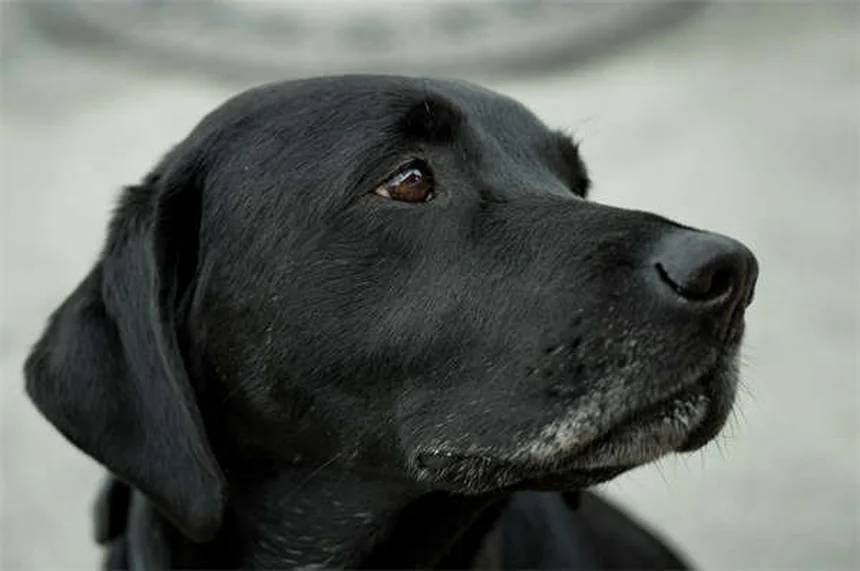Advertisement
What is DIC in dogs? The answer is: Disseminated intravascular coagulation (DIC) is a life-threatening blood clotting disorder that can quickly turn deadly. I've seen too many pet owners unaware of this silent killer until it's too late. Here's what you need to know right now - DIC causes abnormal clotting throughout your dog's body, then leads to dangerous bleeding when clotting factors run out. The scary truth? DIC is always secondary to another serious condition like infections, trauma, or cancer. We veterinarians consider this a ticking time bomb situation - every minute counts when dealing with DIC. If you notice unexplained bruising, nosebleeds, or weakness in your pup, don't wait. Get to an emergency vet immediately - this isn't something home remedies can fix.
E.g. :Barrier Frustration in Dogs: Causes, Signs & Proven Solutions
- 1、Understanding DIC in Dogs: A Pet Owner's Guide
- 2、Spotting the Warning Signs
- 3、What Triggers This Nightmare?
- 4、How Vets Figure This Out
- 5、The Battle Plan: Treating DIC
- 6、The Road to Recovery
- 7、DIC FAQs: Your Burning Questions Answered
- 8、Final Thoughts From a Dog Lover
- 9、Beyond the Basics: What Every Dog Owner Should Know
- 10、The Human Side of Canine DIC
- 11、Prevention Is Better Than Cure
- 12、When the Worst Happens
- 13、Stories of Hope
- 14、FAQs
Understanding DIC in Dogs: A Pet Owner's Guide
What Exactly Is This Scary Condition?
Let me break it down for you in simple terms. Disseminated intravascular coagulation (DIC) is like your dog's blood going completely haywire. Imagine tiny clots forming everywhere in the bloodstream, clogging up the works like traffic jams in tiny blood vessels. This can starve organs of oxygen and nutrients, leading to serious trouble.
Here's the scary part - once all the clotting factors get used up, the opposite problem happens. Your pup might start bleeding from places they shouldn't, like their gums or nose. It's like the body used up all its emergency supplies and now can't stop the leaks.
Why Does This Happen to Dogs?
DIC never shows up uninvited - it's always crashing the party of some other serious health issue. Think of it as the worst plus-one ever. Your vet might spot DIC when your dog's already hospitalized for something else. And here's the kicker - it's a true medical emergency that needs immediate attention.
Ever wonder how fast this can turn bad? Let me tell you - lightning fast. If you suspect DIC, don't wait around wondering. Get your furry friend to the vet immediately.
Spotting the Warning Signs
 Photos provided by pixabay
Photos provided by pixabay
The Obvious Red Flags
Your dog might show:
- Unusual weakness (more than just post-walk tiredness)
- Mysterious bruises appearing out of nowhere
- Nosebleeds that won't quit
- Bleeding gums (and no, they didn't just brush too hard)
But here's something many owners miss - the subtle signs. Your dog's gums might look pale, or their breathing might seem off. These can be early warnings before the big symptoms show up.
The Less Obvious Clues
Some symptoms sneak up on you:
| Symptom | What It Looks Like |
|---|---|
| Blood in urine | Pinkish tint to pee |
| Vomiting blood | Dark, coffee-ground looking vomit |
| Trouble breathing | Panting when resting, blue-ish gums |
Notice any of these? Don't play the waiting game. Your dog's body is sounding the alarm.
What Triggers This Nightmare?
The Usual Suspects
DIC always has an underlying cause - it's never the main event. Some common triggers include:
- Severe infections (like sepsis)
- Trauma (think car accidents)
- Certain cancers
- Pancreatitis (that painful belly condition)
Here's a fact that might surprise you - even snakebites can set off DIC. Nature's way of being extra cruel, I guess.
 Photos provided by pixabay
Photos provided by pixabay
The Obvious Red Flags
Because knowing the cause helps treat the condition. It's like fixing a leaky pipe - you need to find where the water's coming from first. Your vet will play detective to uncover what started this whole mess.
How Vets Figure This Out
The Diagnostic Puzzle
There's no simple "DIC test" - vets have to put together clues like Sherlock Holmes. They'll run blood tests checking clotting factors, but here's the tricky part - results change as the condition progresses.
Ever wonder why it's so hard to diagnose? Because DIC has phases. Early on, you see excessive clotting. Later, when clotting factors run out, you get bleeding. It's like the blood can't make up its mind what to do.
The Full Workup
Your vet will likely order:
- Complete blood count (CBC)
- Chemistry panel (checks organ function)
- Clotting tests
- Possibly X-rays or ultrasound
Think of it as your dog getting the full VIP diagnostic treatment. Not the kind of spa day anyone wants, but necessary.
The Battle Plan: Treating DIC
 Photos provided by pixabay
Photos provided by pixabay
The Obvious Red Flags
First rule of DIC club: treat what started it. Whether it's antibiotics for infection or surgery for trauma, we need to stop the original problem. This isn't a "take two aspirin" situation - we're talking aggressive treatment.
Your dog will likely need:
- IV fluids (the medical version of Gatorade)
- Medications to support organ function
- Possibly plasma or blood transfusions
The Hard Truth About Treatment
Here's the reality check - there's no magic DIC cure. We're playing defense, trying to support the body while it heals. Oxygen therapy might be needed for breathing issues. Pain meds help with discomfort. It's all about buying time for the underlying condition to improve.
And yes, this usually means hospitalization. Think of it as your dog checking into a very expensive, very stressful doggy hotel.
The Road to Recovery
What Survival Looks Like
The numbers aren't pretty - only about 40% of dogs survive DIC. But here's the hopeful part: early treatment makes all the difference. Dogs typically need 3-5 days of intensive care (sometimes longer) to pull through.
Survivors might face ongoing challenges like organ damage. They'll need follow-up care, possibly medications, and regular bloodwork. It's not an easy road, but many dogs do bounce back with proper care.
Your Role in Recovery
As an owner, you'll need to:
- Follow all discharge instructions religiously
- Watch for any recurring symptoms
- Keep all follow-up appointments
Think of yourself as your dog's personal nurse. Minus the cute uniform, unfortunately.
DIC FAQs: Your Burning Questions Answered
Acute vs Chronic - What's the Difference?
Acute DIC is the scary, fast-moving version that can turn deadly quickly. Chronic DIC is slower but still dangerous. Both types stem from underlying conditions that need treatment ASAP.
Can My Dog Fully Recover?
Some do, but many have lasting effects. The key is catching it early and treating aggressively. Even survivors might need long-term management of any organ damage.
How Can I Prevent This?
Since DIC is always secondary, focus on preventing the triggers. Keep up with vaccines, avoid toxins, and get prompt treatment for any serious illness or injury. Basically, be the responsible pet parent you already are.
Final Thoughts From a Dog Lover
DIC is scary stuff, no sugarcoating that. But knowledge is power. Now that you understand the signs and risks, you're better prepared to act fast if needed. Remember - when in doubt, get it checked out. Your furry friend is counting on you.
Beyond the Basics: What Every Dog Owner Should Know
The Hidden Costs of DIC Treatment
Let's talk dollars and sense - treating DIC isn't cheap. We're talking thousands, not hundreds. But here's something most people don't consider - the emotional toll. Watching your pup hooked up to IVs and monitors can be heartbreaking. You'll need to prepare yourself mentally for this rollercoaster.
Ever wonder why pet insurance matters so much? Because when DIC hits, you'll want to focus on your dog's health, not your bank account. I've seen too many owners forced to make impossible choices because they weren't prepared financially.
Nutrition's Role in Recovery
What your dog eats during and after DIC makes a huge difference. We're not talking regular kibble here - think high-quality, easily digestible foods packed with nutrients. Your vet might recommend prescription diets or even tube feeding in severe cases.
Here's a pro tip: start with small, frequent meals. A dog recovering from DIC is like an athlete after a marathon - they need fuel, but their system can't handle too much at once. And hydration? Absolutely crucial. Think of water as liquid medicine during recovery.
The Human Side of Canine DIC
When to Call for Backup
You don't have to go through this alone. Seriously, who knew dog ownership would require assembling your own medical support team? Consider reaching out to:
- Veterinary specialists (they're the ER docs for pets)
- Pet support groups (people who've been there)
- Trusted friends/family (for emotional support)
I once met an owner who camped out in their car for three days outside the animal hospital. Don't be that person - take care of yourself too. You can't pour from an empty cup, as they say.
The Waiting Game Strategy
Hospital stays mean lots of waiting. Here's how to stay sane:
| Activity | Why It Helps |
|---|---|
| Bring familiar items | Your scent comforts your dog |
| Keep a symptom journal | Helps track small improvements |
| Take walking breaks | Clears your head |
Remember, your dog picks up on your stress. Fake calmness if you have to - they don't know you're secretly panicking inside.
Prevention Is Better Than Cure
Everyday Habits That Help
While you can't prevent DIC directly, you can reduce risks. Simple things matter more than you think:
- Regular vet check-ups (twice yearly for seniors)
- Prompt treatment for infections
- Safe environment (no toxic plants/chemicals)
Here's something funny - I know a dog who got pancreatitis from stealing an entire stick of butter. Moral of the story? Dog-proof your kitchen like you're raising a furry Houdini.
The Vaccination Connection
Wait, vaccines prevent DIC? Not directly, but they prevent illnesses that could trigger it. It's like wearing a seatbelt - you're not expecting a crash, but you'll be glad it's there if one happens.
Core vaccines are non-negotiable, but talk to your vet about lifestyle-specific ones too. That weekend hiking buddy pup might need leptospirosis protection, for example.
When the Worst Happens
Making Tough Decisions
Nobody wants to think about this, but sometimes treatment isn't working. How do you know when to keep fighting versus when to say goodbye? There's no easy answer, but quality of life scales can help objectively measure your dog's condition.
Ever wonder what vets wish owners knew about end-of-life care? That sometimes the kindest choice is letting go. It's not giving up - it's taking on the pain so your dog doesn't have to.
Grieving and Moving Forward
If you lose your dog to DIC, allow yourself to grieve. Pets are family, period. Consider:
- Creating a memorial (paw prints, photos)
- Talking to pet loss counselors
- Waiting before getting another pet
Here's what surprised me - some people find comfort in donating unused medications or supplies to shelters. Turning grief into something positive can be healing.
Stories of Hope
Meet the Survivors
Let me tell you about Max, a golden retriever who beat the odds. After five days in ICU for DIC caused by pancreatitis, he walked out wagging his tail. Today? You'd never know he'd been so sick. Stories like his remind us why we fight so hard.
The secret to Max's recovery? An incredible veterinary team plus an owner who noticed early symptoms. That combination makes all the difference.
What Survivor Dogs Teach Us
Dogs who overcome DIC often show remarkable resilience. They remind us to:
- Celebrate small victories (first meal, first walk)
- Be patient with setbacks
- Appreciate every good day
I'll leave you with this thought: while DIC is terrifying, modern veterinary medicine can work miracles. With quick action and proper care, many dogs do come out the other side. And that's worth fighting for.
E.g. :DIC (Disseminated Intravascular Coagulation) In Dogs | PetMD
FAQs
Q: How quickly does DIC progress in dogs?
A: Let me tell you straight - DIC moves scary fast. In acute cases (the most common form we see), symptoms can progress from mild to life-threatening within hours. I've had cases where a dog came in with minor bruising and was in organ failure by the next morning. That's why we stress immediate veterinary attention at the first sign of trouble. The chronic form moves slower, but both types are equally dangerous. Remember - your dog's blood is essentially attacking itself, and every minute counts when clotting factors are being depleted.
Q: What are the first noticeable symptoms of DIC in dogs?
A: From my 10 years in emergency vet medicine, these are the red flags I tell every pet owner to watch for: unexplained bruising (especially on the belly), sudden nosebleeds, bleeding gums without dental issues, and extreme lethargy. But here's what most owners miss - the subtle early signs like pale gums, rapid breathing at rest, or a slightly distended abdomen. Pro tip: Lift your dog's lips regularly to check gum color. Healthy gums should be bubblegum pink, not pale or blotchy.
Q: Can DIC in dogs be cured?
A: Here's the hard truth - there's no direct cure for DIC itself. We treat the underlying cause while supporting the body through the clotting crisis. In my practice, we've had success with plasma transfusions, IV fluids, and intensive monitoring, but it's an uphill battle. The survival rate sits around 40%, which is why early detection is crucial. The silver lining? Dogs that survive often regain good quality of life, though some may need ongoing medication for organ damage.
Q: How much does DIC treatment cost for dogs?
A: Brace yourself - treating DIC isn't cheap. Between hospitalization, bloodwork, transfusions, and specialist care, costs typically range from $3,000 to $8,000 depending on severity. I know that's a gut punch, which is why I always recommend pet insurance before emergencies strike. Some clinics offer payment plans, but here's my advice - if cost is a concern, discuss budget-friendly options with your vet immediately. We'd rather treat early with limited resources than wait until it's too late.
Q: Can vaccines or preventive care help avoid DIC?
A: While there's no vaccine against DIC specifically, preventive care is your best defense. Since DIC always follows other conditions, keeping your dog current on vaccines (especially for infectious diseases) and bringing them in promptly for any illness or injury can dramatically reduce risk. My golden rule? Any fever over 103°F, unexplained lethargy lasting more than 24 hours, or trauma (even if they seem fine) warrants a vet visit. It's always better to be the "overprotective" pet parent than the regretful one.







